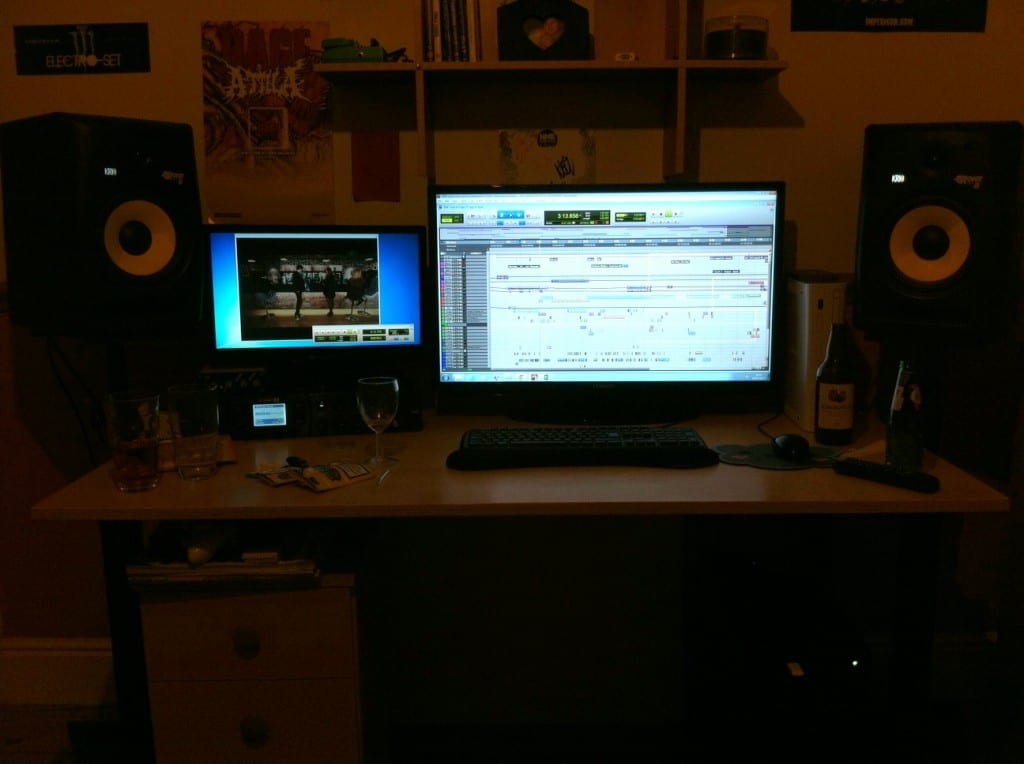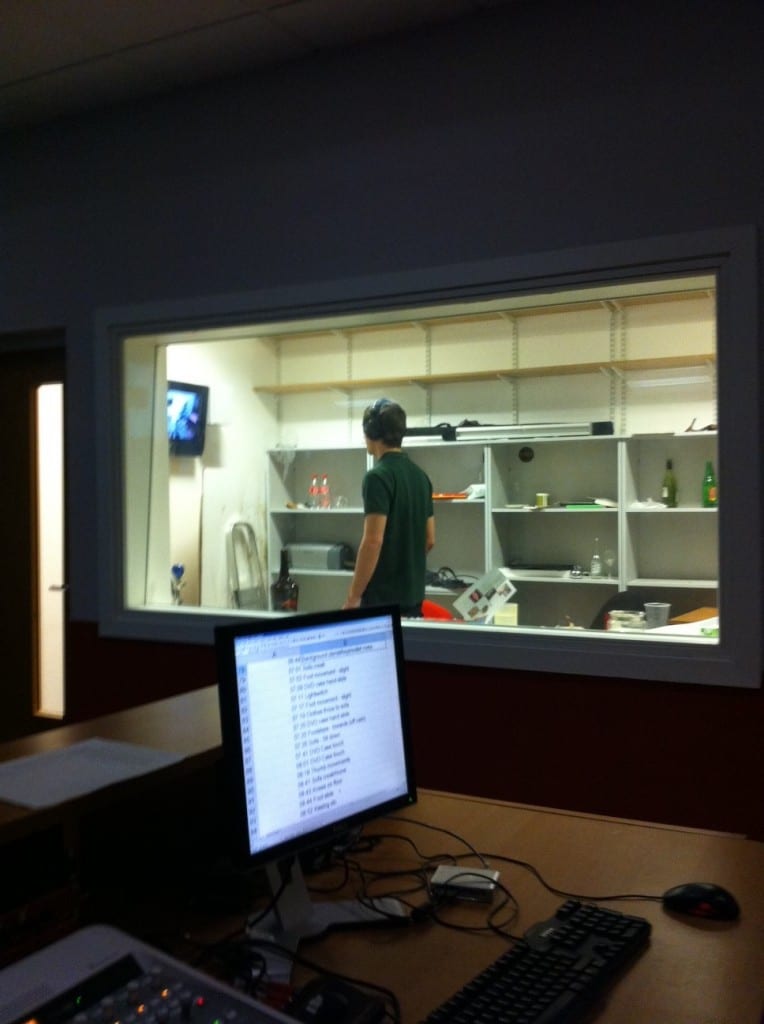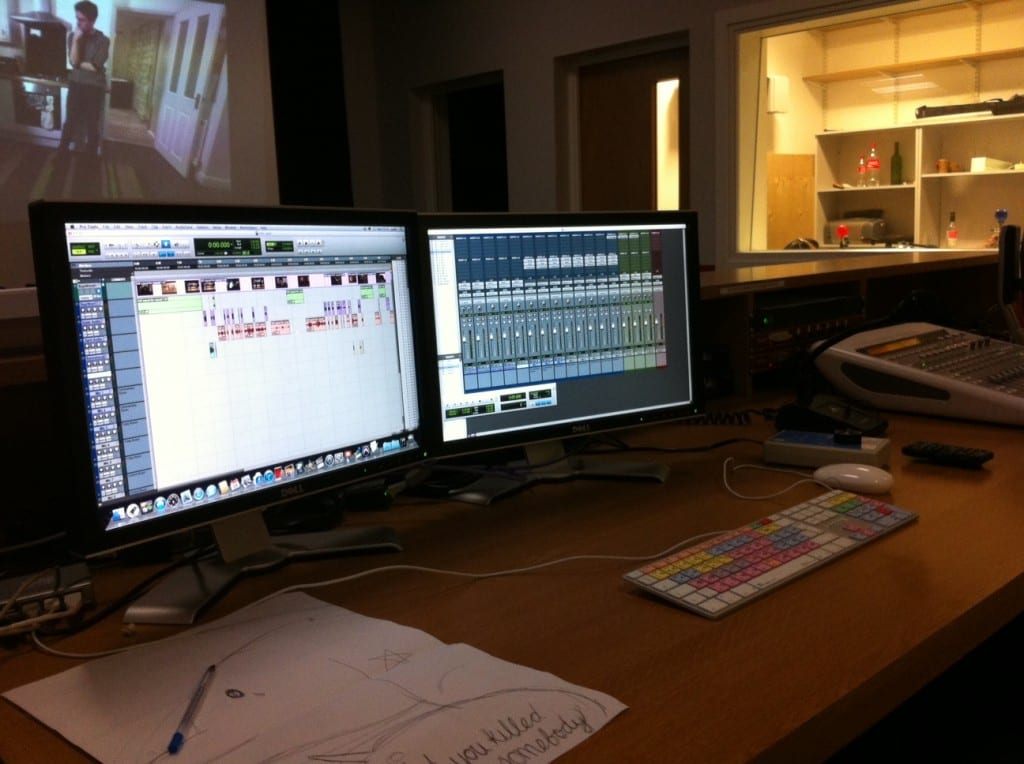For my final project I collaborated with media production students to produce a short film. We decided to choose this as our semester b project because we believed we worked well as a group in our Sound for Visual module in level 2. I thought this project was most suitable for me due to my skills into the audio recording process and my future career aspirations. I am currently undergoing work experience producing sound for a feature length film. I felt i could use the skills that i have learnt through this work experience process, as well as my skills learnt through University, to produce a high quality sound track for a film production. I am highly interested into the process of recording sound for film and i believe this has been reflected on the outcome of the final film.
I believe on a whole I worked well with the media production group. At first we had some communication issues which in turn, caused disagreements and arguments between the group. For example, arranging meet ups, booking locations and creating logs for each week of production. The use of social networking was important in terms of communication within the group. A simple group was setup where each group member could post their thoughts and opinions on the project as well as arranging meetings and posting any relevant material needed for the project. These consisted of call sheets, shot logs and many other vital information. I worked well with the film director and editor in liaising with them each week with constant updates on the project. Constantly speaking to the director throughout the film process meant i could obtain a stronger understanding of the outcome he wanted from the film. I gained understanding of how he wanted the audience watching to perceive the film production. From knowing this information, it helped me in carrying out each location shoot with more confidence in what sounds needed to be captured in order to meet the directors guidelines. I noticed whilst producing sound for our film that the research I had studied could easily be applied to the professorial practices being carried out. Some of these for example are microphone placements which came naturally without much thought. Without undergoing research prior to each shoot, a different outcome would of been apparent.
The location recording stage of the project went really well. This was also an enjoyable process which gave me a further insight into the long, strenuous process a location shoot can be. Working within a group as well as independently played a big part in the success of the location recording. Myself and my group were disappointed with the sound of the Marantz recorder. This was because of the sound of the pre amps in the Marantz which impacted the overall audio quality. We borrowed an SQN 5 Channel location mixer from Ronald Fowler, a University lecturer. The SQN mixer made a huge difference on the quality of the dialogue recording. This was due to the better pre amps inside the SQN. Research into using the SQN mixer was needed prior to using the equipment. This was to prevent any problems with routing the equipment. Problems that arose during our location recording consisted of sound recording restrictions and equipment failure. Due to some of the camera angles used in ‘April’, the boom had to be positioned in inconvenient places so it was out of shot. This affected the sound which we could capture for certain shots due to the distance the microphone was away from the actor. We rectified this by recording the audio on different camera angles. Another way this could of been resolved would be to use different sized boom poles to position the microphone closer to the actor who was speaking. Radio mics is another possibility to rectify this problem, which i will bear in mind if ever completing another project with similar occurrences. The other problem that occurred on the location shoots was equipment issues. Whilst recording our opening bar scene in the originally decided Home bar (which was later re-shot in Engine Shed) a switch on the Marantz was accidentally changed. This switch was what determined if the Marantz recorded at line level, or mic level. Due to us using the SQN as our location mixer, the Marantz needed to be on line level else the signal would be amplified again by the pre amps inside the Marantz. This meant that when the audio was played back, it was incredibly distorted and unusable. Luckily, due to overly loud external background noise which was out of our control, this scene was scheduled for a re-shoot. This problem occurred because of a lack of planning between both myself and Ash and the media production group. To prevent this problem happening in future productions, I would test the Marantz level as well as checking the switches are correct during each location shoot.
The post production stages of our project went really well with good co-operation between myself and the media production group. I really enjoyed recording the ADR recording for our project. This was because i have not recorded much ADR before this film and it was an insight into this industry process. If this process is done correctly, it can improve the overall sound of the dialogue greatly in the final mix. The foley recording was recorded to a very good standard. The foley sounds are very subtle in the mix which gives the impression to the audience that they have not been added in during the post production stages of the film. I have learnt that when recording foley, it is best to act as the actors are in the film to capture the sounds. This gives a greater sense of realism to the foley sounds that are recorded.
In conclusion i am very pleased with the outcome of the sound work to our film. I believe many of my skills have improved for example, my communication, time management and understanding of the film process. From working with media production students means i have learnt that i have to work to not only my own schedule, but also other members in the film groups schedules as well. My understanding of the film process has increased due to working with different equipment other than audio equipment. They will benefit me in my chosen career path in working within the film industries as a sound recordist. This project has opened my eyes to all the processes within film productions and given me more experience in working under pressure to deadlines.


